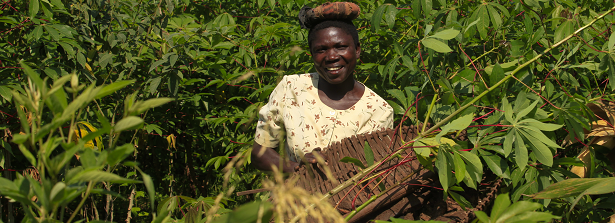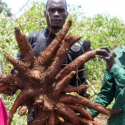Gender and power analysis

The research consortium of the ARF project “Cassava Applied Research for Food Security in Northern Uganda” held their annual review meeting on March 22 and 23, 2017 at Hotel International in Muyenga, Kampala. The project team managed to do a gender and power analysis for the project, especially looking at roles between women and men along the cassava value chain, control and access to resources, decision making and needs.
Roles within the project activities
This was done looking at three levels, which include; production, processing and marketing. The need to understand roles between men and women at all levels was mainly to analyze the inequalities that exist along the value chain and also, where the burden of real hard work falls. From our discussions it came out clearly that the roles at the production stage ( i.e site selection, land preparation, seed selection, planting , weeding and harvesting) are fairly shared among men and women, while roles at the processing stage (i.e transportation, pealing, chipping, drying bagging and storage) is fully done by the women and children and finally work and activities at the marketing level (i.e Identifying markets, transportation to markets, price negotiations and cash handling ) is done by the men. From this analysis it was clear that most of the workload and the dirty job is done by women while the marketing which has the money value attached is done by the men and thus creating a picture of inequality along the cassava value chain.
Access and control of productive resources
The research consortium did an analysis on key productive resources required in the project implementation and these include; land, produce proceeds (money), processing equipment, seed, training/knowledge and information. From these analysis it was found that in most of these resources men have both access and control but women have access and less or no control. It was also explained that some women do not even have it in their minds that they can own some of these resources especially land because they know land is always owned by men. The inequality here is that women can only access yet men can access and control.
Decision making
This involves making decisions at all stages of the value chain in terms of production, processing and marketing of cassava products. At the production level men make most of the decisions especially identifying where cassava can be planted because they control the resources but women will do the implementation. However at the processing level women have the power to decide because whatever is done at this stage is rated women’s work and men are not involved. This includes peeling, chipping among others. Finally at the marketing stage, it is the men who make decisions for example on how many should be spent, even on how much the cassava should be sold at, this is mostly because there is an element of money in it. Basing on the analysis, it implies that men dominate decisions especially when the use of resources is involved and where there is money, this is because they want to use it to show their power over women. From the staff based on the ground they highlighted that men dominate decision making but sometimes it also depends on the composition in the groups in terms of numbers, where women are many , there is possibility that they can influence decisions and where men are more it is obvious that they will take over.
Needs for both men and women
The needs are in terms of practical needs and strategic needs. From the discussions basing on the past one year of implementation, it was clear that women mostly aim at meeting practical needs because of the assumed caring role, meaning that they don’t even aim at challenging the unequal gender position of women but being able to survive, While the men aim at meeting the strategic needs that puts them at a higher level of status but also because of their level of exposure that women are not able to attain because of the heavy caring workload which is not even paid.
The general observation is that women are still disadvantaged in relation to divisions of roles, control over resources, and decision making and the subordinate position of women has been sustained because of the following reasons;
- The existing cultural norms in the project region. The male are culturally known to be owners of productive resources, heads of families and therefore all decisions are always expected to be made by the men. On the other hand women themselves are comfortable with their subordinate position because they think that is their place and men are always superior.
- The varying level of education. In this case men are more educated compared to their male counterparts and because of that the men have more power which has translated into gender inequality.
- Lack of awareness, the population has limited information on gender inequality.
- The superiority complex versus inferiority complex. Women always feel low compared to the men and men always feel that they know it all.
The above situation can easily impact on the project negatively because;
- The results from the analysis indicate that there is information gap between women and yet do most of the work which requires them to be updated
- The participation levels for women are low because of the caring workload that they are involved in and yet they form they highest percentage of the target group.
- Management of sites is done by women and yet the women tend to dominate decision’s, proceeds, among others
Recommendations
- Awareness raising on the need for sharing household chores between women, men, boys and girls, this will enable women have time for project activities
- Awareness creation of the need for equity and equal access and control over productive resources, this will motivate women to actively participate, having it in mind that they will equally benefit from their hard work
- Encouraging active contribution by women so that their contributions towards decision making are captured and considered
- Use of Gender Action Learning Systems methodology, this tool will encourage joint decision making in households but also at community level. It is also a planning tool that helps participants to follow through their set goals.
Please download the Gender and power analysis (in PDF), including the Gender at work framework and the Actor and factor mapping for the project.






